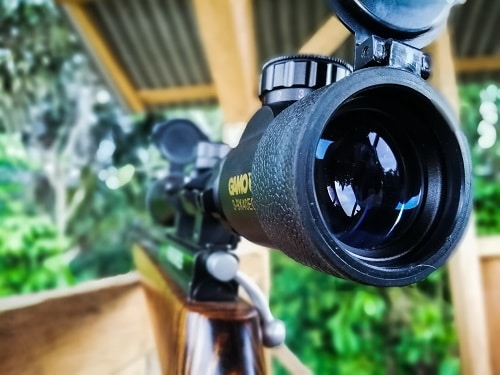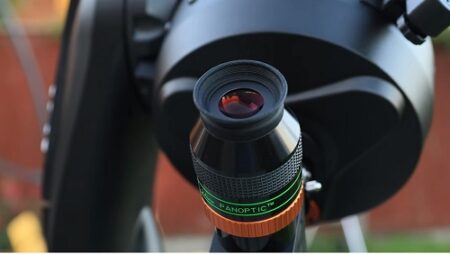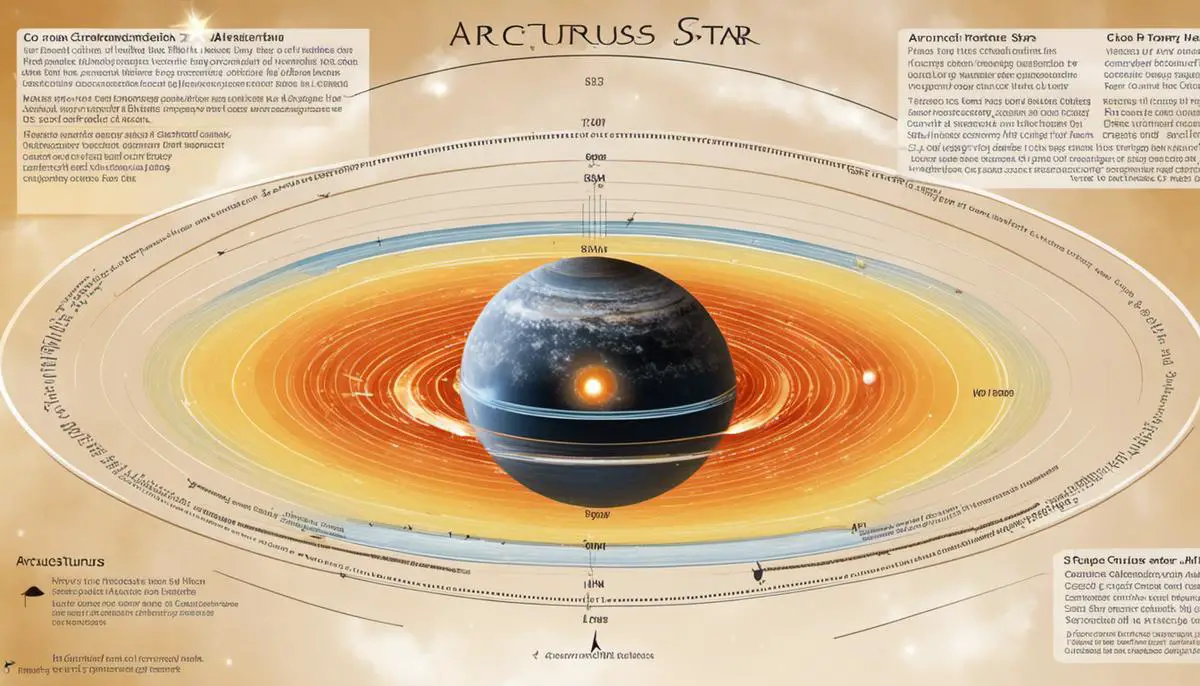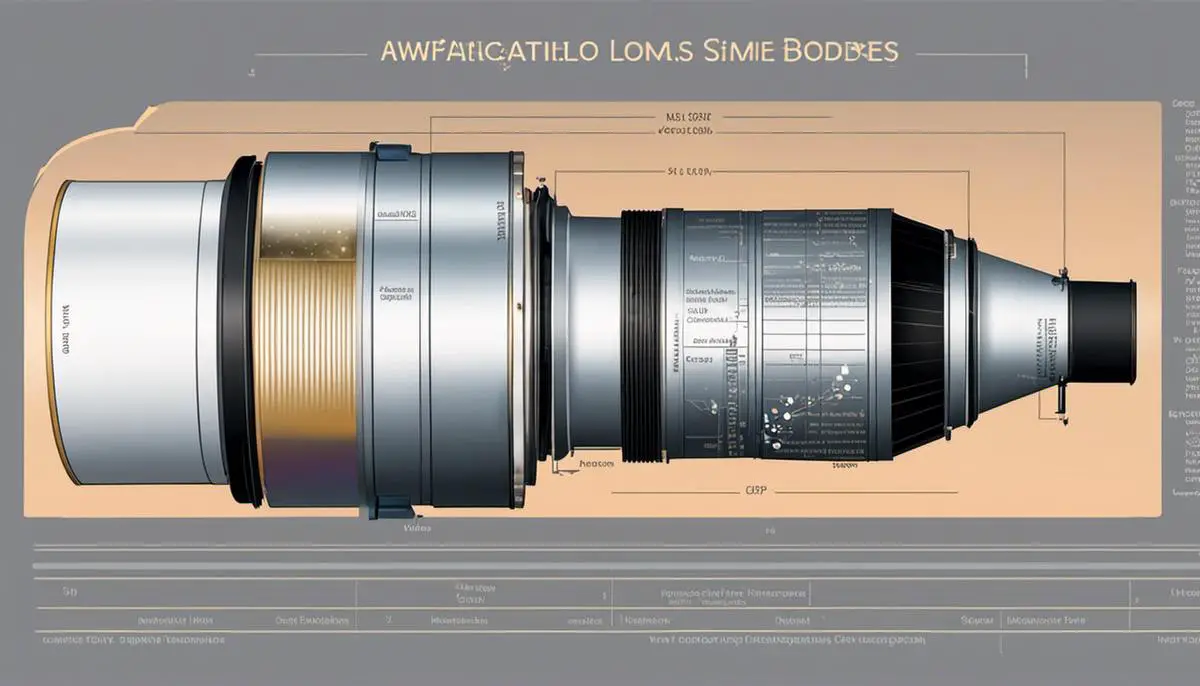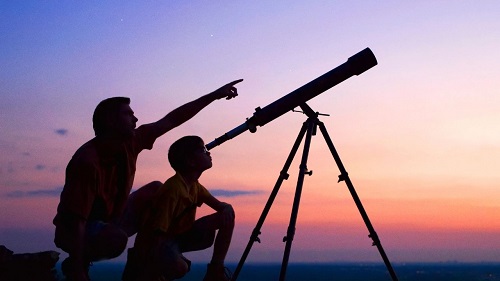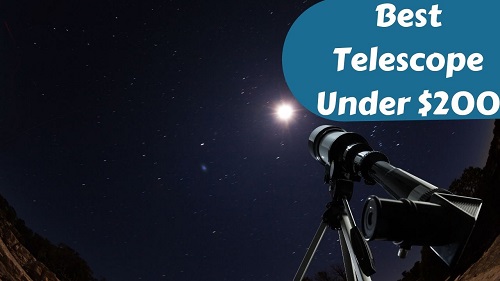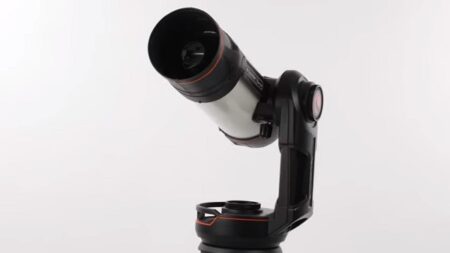If you are into astronomy and want to see a clear view of the solar system, then you need a 70mm telescope. This telescope will offer good image of the object, which cannot be seen with naked eyes. You can also see the big planets with the help of this telescope.
But viewing the small and tiny detail of the planets with this telescope will be hard, so don’t expect that. This type of telescope will provide just the outer view of the planets in the solar system.
It can be used by amateurs, professionals, and beginners. Below I have explained in detail what you can see with a 70mm telescope, so let’s begin.
Is a 70mm telescope good?
70mm telescope is good for beginners and casual observers. It provides decent views of the Moon, planets, and some brighter deep-sky objects. While it may not offer the same level of detail as larger telescopes, it is portable, affordable, and suitable for basic astronomical observations.
Saturn through 70mm telescope
Saturn viewed through a 70mm telescope will appear as a small, distinct disk with its iconic rings clearly visible. While the level of detail may be limited compared to larger telescopes, you should be able to observe the rings and, under good viewing conditions, even spot some of Saturn’s larger moons.
Venus through 70mm telescope
Venus viewed through a 70mm telescope will appear as a bright, crescent-shaped disk. You can observe its phases as it goes through different stages, similar to the Moon. However, due to its thick atmosphere, details on Venus may be challenging to observe with a 70mm telescope.
What Can You See With a 70mm Telescope?
| Celestial Objects | Visibility with a 70mm Telescope |
|---|---|
| Moon | Craters, mountains, lunar seas, and details of the lunar surface. |
| Planets | Venus phases, Jupiter’s cloud bands, Saturn’s rings, Mars features (seasonal), and some details on other planets. |
| Double Stars | Resolvable binary stars, showing two distinct stars. |
| Star Clusters | Some open star clusters, like Pleiades (Seven Sisters), and globular clusters with a concentrated core. |
| Nebulae | Brighter nebulae like the Orion Nebula (M42) may be visible, showing some details. |
| Galaxies | Some brighter galaxies like Andromeda Galaxy (M31), showing its core and shape. |
| Meteor Showers | Can observe meteor showers and shooting stars. |
As we said above, with the help of a 70mm (2.8-inch aperture), you can get a decent image of the objects. But most of the time the clarity, or image you see of the object, may not be clear.
This happens due to a lot of external factors, such as light pollution, atmosphere, quality of the eyepiece, the sky’s condition, and others. You have to purchase a high-quality telescope to get a clear image of the celestial objects.
It is necessary to know the telescope’s ‘f/no’ parameter before purchasing. If the parameter of the telescope is mentioned as f/15, then f=70mm X 15=1050mm will be the focal length. Add a 2X Barlows lens or the best eyepiece for viewing planets with the telescope to enjoy a strong magnification.
There a wide number of telescopes in the market, and you need to select the best one from them. But if I have to recommend you a 70mm telescope, then my recommendation will be the superior Celestron 70mm travel scope.
This professionally engineered refractor telescope comes with fully-coated glass optics and a large 70mm objective lens that offers a bright and enhanced image of the celestial objects at night. It is easy to use and includes all the necessary accessories for convenient use and a travel backpack for portability.
The Objects You Can See With a 70mm Telescope
If everything is alright and the sky’s light population is minimal, then you will be able to see the below objects with the telescope:
- The polar caps on Mars.
- Moon with its craters.
- Several Moons of Jupiter and their shadows.
- Cloud belts on Jupiter.
- Mars’s major dark surface.
- Mercury phases.
- The rilles of Moon.
- Planet Saturn and its rings.
- About 3-5 Moons of the Saturn.
- Not so clear image of Uranus and Neptune.
- Sunspots (Aperture filter needed)
Nebulas and Stars
- Emission nebulas
- Planetary nebulas.
- Distant galaxies.
- Stars having around 11.5 to 12 stellar magnitude.
- Mizar, Albeiro, and some other double stars.
- Globular clusters.
Related Questions
What can I see with a 70mm telescope?
With a 70mm telescope, you can observe a variety of celestial objects. This includes the Moon, planets in our solar system such as Jupiter and Saturn, bright star clusters, some nebulae, and even some brighter galaxies.
Can I see details on the Moon with a 70mm telescope?
Yes, a 70mm telescope is capable of providing detailed views of the Moon. You can see lunar craters, mountains, valleys, and other surface features. The Moon is an excellent target for telescopes of this size.
Can I see planets like Mars or Venus with a 70mm telescope?
Yes, you can observe planets like Mars and Venus with a 70mm telescope. However, the level of detail may be limited compared to larger telescopes. You should be able to see Venus as a bright disk, and Mars may appear as a small reddish-orange sphere with some surface features visible during favorable oppositions.
Can I see distant galaxies with a 70mm telescope?
While a 70mm telescope can capture some galaxies, the level of detail and the number of galaxies visible will be limited. You may be able to observe brighter galaxies like the Andromeda Galaxy (M31) or the Whirlpool Galaxy (M51), but they will appear as faint smudges of light.
What about star clusters and nebulae?
A 70mm telescope is suitable for observing bright star clusters like the Pleiades (M45) or the Beehive Cluster (M44). It can also reveal some of the brighter nebulae such as the Orion Nebula (M42) or the Lagoon Nebula (M8), although the details may not be as pronounced as with larger telescopes.
Can I use a 70mm telescope for terrestrial observations?
Yes, a 70mm telescope can also be used for terrestrial observations during the day. You can use it for bird watching, wildlife observation, or for enjoying scenic views. Some telescopes even come with erecting prisms or diagonal mirrors to provide right-side-up images for terrestrial use.
Is a 70mm telescope suitable for astrophotography?
A 70mm telescope can be used for basic astrophotography, especially for capturing wide-field views of the night sky, including star fields, constellations, and the Milky Way. However, it may not provide the necessary focal length or light-gathering ability for capturing detailed images of distant galaxies or planets.
Can I view other objects like comets or meteor showers with a 70mm telescope?
Yes, you can observe bright comets and meteor showers with a 70mm telescope. Comets will appear as fuzzy patches of light, and during meteor showers, you can spot shooting stars across the night sky.
Wrap Up
If you have begun your astronomy journey or in the middle of it, then surely purchasing a 70mm telescope will be the best choice.
It can give you a decent view of the planets and the other objects in the solar system and will help in enhancing your knowledge. I hope the information shared in this article has helped you in knowing more about this telescope.

I’m Ali. BestTelescopeReview.com is my little place on the web to express what I’ve learned first-hand, specially about the telescope part. I am writing these articles to share my love for astronomy with you.

